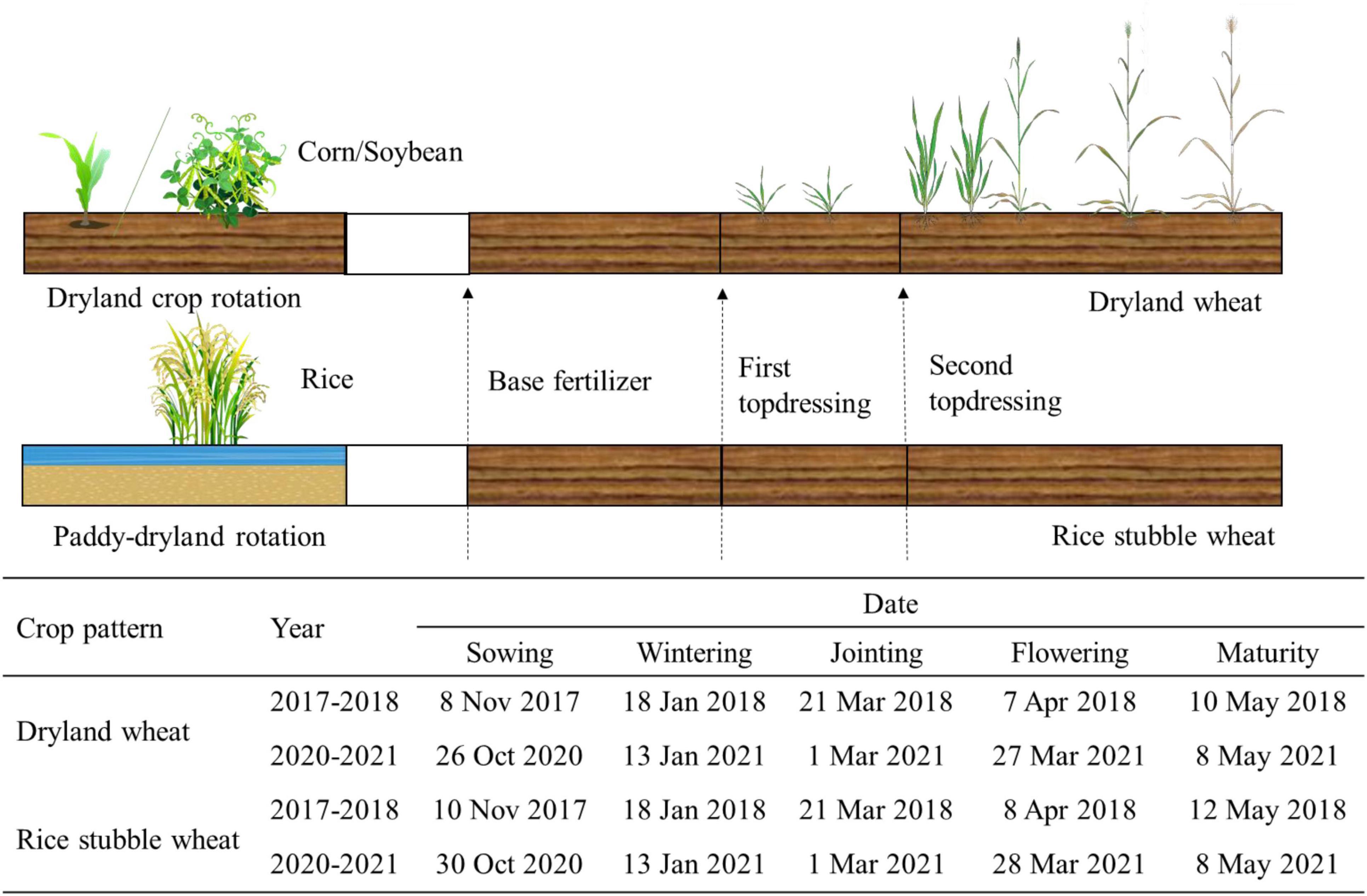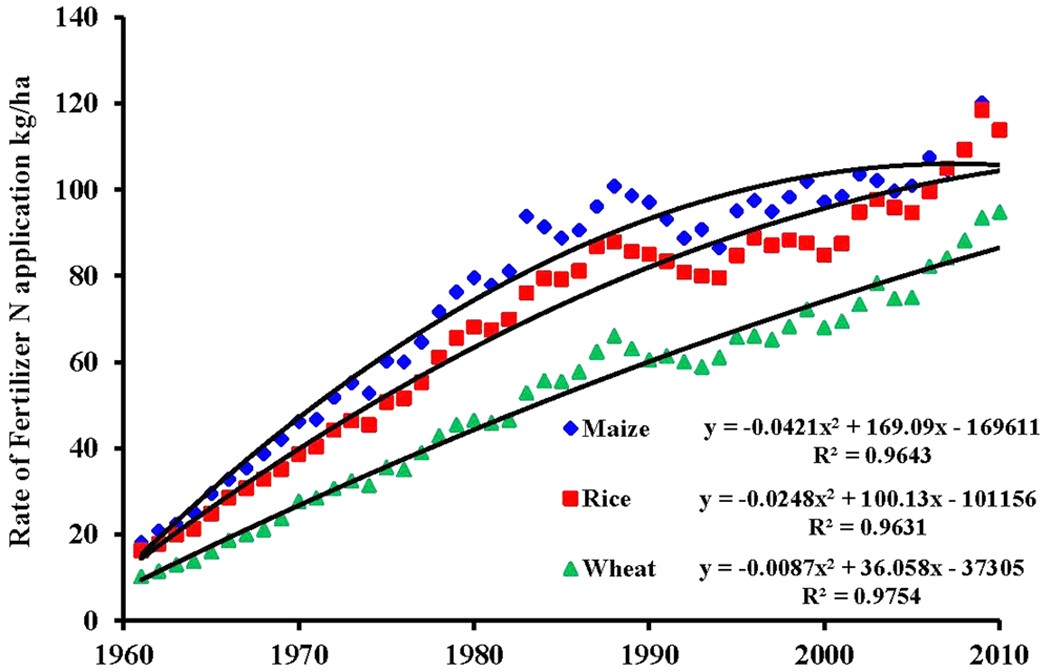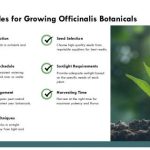Are you tired of watching your maize, wheat, and rice crops struggle to reach their full potential? You’re not alone.
Ensuring your plants receive the right nutrients is crucial for bountiful harvests and healthy growth. The secret weapon? The right fertilizers. Imagine turning your fields into thriving green landscapes, bursting with life and vitality. This isn’t just a dream; it’s a reality you can achieve with the right guidance.
You’ll discover the top fertilizers that can transform your agricultural efforts, boosting both yield and quality. Stick with us, and you’ll learn how to choose the perfect fertilizers that align with your farming needs, setting you on the path to success. Let’s dive in and unlock the potential of your crops.
Essential Nutrients For High Yield
Selecting the right fertilizers boosts maize, wheat, and rice production. Nitrogen, phosphorus, and potassium are vital for growth. Balanced nutrient application supports healthy crops and high yields.
Growing maize, wheat, and rice requires an understanding of essential nutrients to ensure a high yield. These crops rely on a balanced supply of nutrients to thrive. The right fertilizers can make all the difference in achieving lush, healthy plants.Understanding Macronutrients
Maize, wheat, and rice need three primary macronutrients: nitrogen (N), phosphorus (P), and potassium (K). Nitrogen promotes lush, green growth, phosphorus supports root development, and potassium enhances overall plant health.
Have you ever noticed how some farmers have greener fields? Often, it’s because they know the right balance of these macronutrients.
Role Of Micronutrients
While macronutrients are crucial, don’t overlook micronutrients like zinc, manganese, and iron. These are needed in smaller amounts but are vital for plant growth and development.
Think of micronutrients as the vitamins for your crops. Just as a vitamin deficiency affects your health, lacking micronutrients can stunt plant growth.
Choosing The Right Fertilizer
Choosing the right fertilizer is like picking the right tool for a job. Look for fertilizers that offer a balanced mix of NPK with added micronutrients for maize, wheat, and rice.
Check the fertilizer label carefully. Does it meet the specific needs of your crop? Consider local soil conditions and crop requirements.
Customizing Your Approach
Each farm and field is unique. Tailor your fertilizer strategy to your specific conditions. Soil tests can help determine nutrient deficiencies and guide your choices.
Remember the time when a neighbor’s crop outperformed yours? It might have been due to a customized fertilization plan based on soil needs.
Application Techniques
How you apply fertilizer can impact its effectiveness. Uniform distribution ensures that every plant gets its fair share of nutrients.
Consider split applications, especially for nitrogen, to match plant growth stages and reduce nutrient loss. This method can boost efficiency and yield.
Environmental Considerations
Over-fertilizing not only wastes resources but can harm the environment. Use fertilizers judiciously to minimize runoff and pollution.
Think about sustainable practices. How can you balance productivity with environmental stewardship?

Organic Vs. Synthetic Fertilizers
Choosing the right fertilizer boosts maize, wheat, and rice yields. Organic fertilizers enrich soil with natural nutrients, enhancing plant growth. Synthetic fertilizers provide rapid nutrient supply, ensuring quick plant response. Balancing both types can lead to optimal crop production.
When deciding between organic and synthetic fertilizers for crops like maize, wheat, and rice, understanding their differences is crucial. Both types offer unique benefits and drawbacks, influencing crop yield and soil health. Your choice may depend on factors like environmental impact, cost, and personal farming philosophy.Organic Fertilizers: Nurturing Naturally
Organic fertilizers originate from natural sources such as compost, manure, and bone meal. They release nutrients slowly, enriching the soil over time. This gradual process reduces the risk of over-fertilization and nutrient runoff. Using organic fertilizers can improve soil structure, enhancing its ability to retain water and nutrients. This is especially beneficial for maize, wheat, and rice, as these crops thrive in nutrient-rich soil. Additionally, organic farming practices can encourage biodiversity, which can naturally reduce pests and diseases. However, organic fertilizers often have lower nutrient concentrations compared to synthetic options. This means you might need larger quantities to achieve the same results. Is your priority maintaining a sustainable ecosystem, or maximizing immediate crop yield?Synthetic Fertilizers: Efficiency And Precision
Synthetic fertilizers are manufactured with specific nutrient compositions, allowing precise control over what you add to your soil. This precision can lead to higher immediate yields, particularly important for large-scale operations focusing on maize, wheat, and rice. They are typically easy to apply and can be absorbed quickly by plants. This rapid absorption can lead to faster growth rates, which might be essential if you’re aiming for a quick harvest turnaround. However, the convenience of synthetic fertilizers comes with potential environmental concerns. Overuse can lead to nutrient runoff, affecting water bodies and local ecosystems. Are you willing to trade environmental impact for speed and yield?Balancing Both: A Hybrid Approach
Many farmers are finding success with a hybrid approach, blending both organic and synthetic fertilizers. By doing this, you can enjoy the immediate benefits of synthetic options while maintaining long-term soil health through organic methods. For instance, applying synthetic fertilizers during crucial growth stages can boost crop yield, while organic fertilizers can be used throughout the season to improve soil structure. This approach could be the best of both worlds, offering sustainability and productivity. Consider experimenting with small plots to see how your crops respond to different fertilizer combinations. What might work best for your specific conditions? Choosing the right fertilizer is not just about immediate results but also about the long-term health of your soil and the environment. Which path aligns with your values and goals?Application Techniques For Maximum Benefit
Choosing the right fertilizers ensures healthy growth for maize, wheat, and rice. Proper application techniques enhance nutrient absorption. Consistent monitoring of soil and plant health maximizes crop yield and quality.
Applying the right fertilizers to maize, wheat, and rice can significantly boost your harvest. However, the way you apply these fertilizers is just as crucial as the type you choose. By refining your application techniques, you can maximize the benefits and ensure your crops thrive. Let’s explore some effective strategies for getting the most from your fertilizers.Understanding Soil Needs
Before you start, it’s essential to know what your soil lacks. Conduct a soil test to determine its nutrient content. This insight allows you to tailor your fertilizer application to what your crops actually need. Have you ever thought about how many nutrients are wasted when the soil is already rich in them?Timing Matters
Applying fertilizer at the right time can make a world of difference. For maize, consider fertilizing at the early growth stages when the plant’s nutrient uptake is highest. Wheat and rice benefit from split applications—dividing the total amount into several smaller doses. This ensures a steady nutrient supply throughout their growth cycle. Could timing be the missing piece in your fertilizer strategy?Proper Placement
Where you apply the fertilizer can affect how well your plants absorb nutrients. For maize, banding (placing fertilizer in a band near the seed) is effective. Wheat and rice often benefit from broadcasting (spreading fertilizer evenly across the field) combined with incorporation into the soil. Think about your current method: is there room for improvement in how you place your fertilizers?Using Technology
Modern technology can greatly enhance fertilizer application. Precision farming tools help in applying the right amount of fertilizer precisely where needed. GPS-guided equipment ensures even distribution, reducing waste and optimizing plant growth. Are you leveraging technology enough in your farming practices?Monitoring And Adjusting
Regularly monitor your crops’ response to the fertilizers. Look for signs of deficiency or excess, such as yellowing leaves or stunted growth. Adjust your application rates and methods based on these observations. Your attention to these details can prevent costly mistakes and boost yields. What tweaks could make your current practice more effective? By honing these techniques, you can ensure that your fertilizers are working at their best, leading to healthier crops and higher yields. Each step you take towards optimizing your fertilizer application is a step towards a more productive harvest.
Regional Recommendations For Crop Success
Fertilizers play a key role in successful maize, wheat, and rice farming. Different regions require specific nutrients for optimal crop growth. Understanding these needs helps maximize yield and quality. Below are regional recommendations for these staple crops.
Maize Fertilizers In Africa
African soil often needs nitrogen, phosphorus, and potassium. Urea and ammonium nitrate are popular choices. They boost nitrogen levels efficiently. Adding phosphorus-rich fertilizers like DAP can enhance root development. Potassium sulfate is recommended for soil lacking this nutrient.
Wheat Fertilizers In North America
North American wheat thrives with nitrogen, phosphorus, and sulfur. Urea is a common nitrogen source for wheat. MAP (Monoammonium Phosphate) provides essential phosphorus. Sulfur deficiencies are addressed using ammonium sulfate.
Rice Fertilizers In Asia
Rice farming in Asia benefits from nitrogen and zinc. Ammonium sulfate is a good nitrogen provider. Zinc sulfate helps with zinc-deficient soils. This combination ensures healthy rice crops.
Wheat Fertilizers In Europe
European wheat often requires nitrogen, potassium, and magnesium. CAN (Calcium Ammonium Nitrate) supplies nitrogen effectively. Potassium chloride is essential for potassium needs. Dolomite lime adds magnesium to soil, improving plant health.
Maize Fertilizers In South America
South American maize benefits from a mix of nitrogen, phosphorus, and boron. Urea or ammonium nitrate delivers needed nitrogen. SSP (Single Superphosphate) enriches soil with phosphorus. Borax addresses boron deficiencies, promoting growth.
Rice Fertilizers In Southeast Asia
In Southeast Asia, rice fields often need nitrogen and phosphorus. Ammonium chloride helps meet nitrogen demands. Superphosphate provides necessary phosphorus. This mix supports strong, healthy rice plants.

Conclusion
Choosing the right fertilizer boosts maize, wheat, and rice growth. Healthy crops need nutrients for strong yields. Balanced fertilizers ensure plants get what they need. Consider soil type and crop requirements. Tailor your approach for better results. Test soil before applying fertilizers.
This ensures nutrients match plant needs. Sustainable practices protect soil health for future crops. Consult experts for personalized advice. Fertilizers play a key role in successful farming. Each crop demands specific care and attention. Invest in understanding your land and crops.
It leads to healthier harvests and productive fields.

